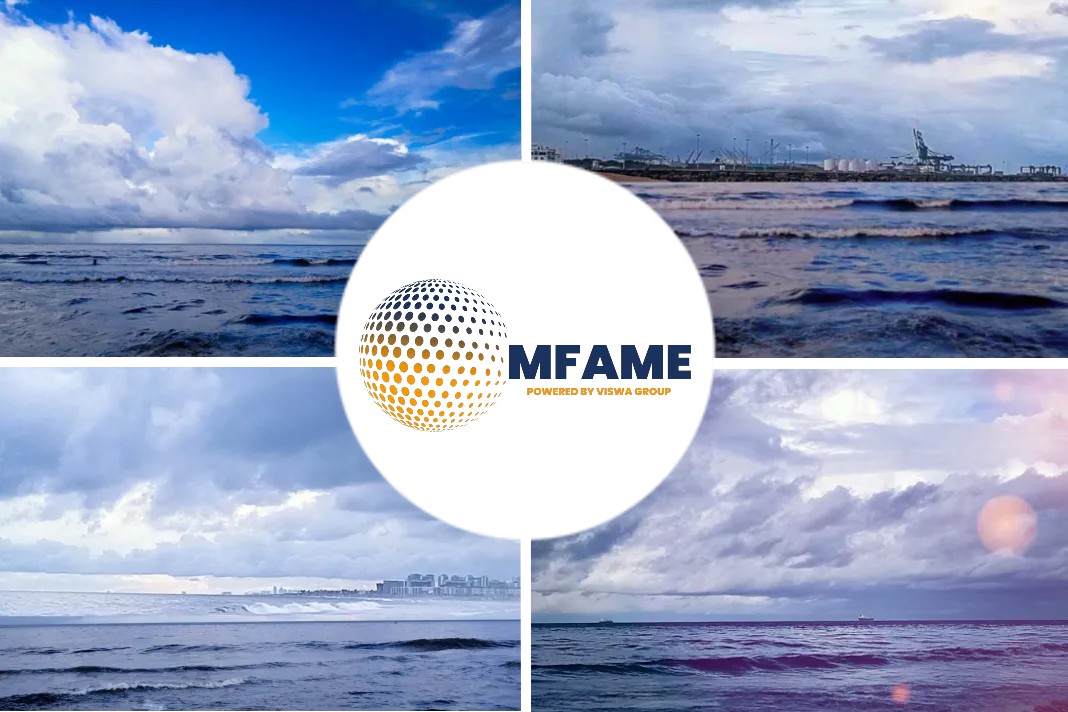
Arctic LNG shipping adds insult to injury, comments Dr Sian Prior, the Lead Advisor to the Clean Arctic Alliance.
Arctic LNG shipping adds insult to injury
Every September, the Clean Arctic Alliance team anxiously watches news from the US National Snow and Ice Data Center for updates on the state of the Arctic. This year, the sea ice reached its fifth lowest extent on record, and as Halloween approaches, it’s still the ninth lowest on record.
Compared to previous Article Circles, this year there was much more mention of tipping points being exceeded and the need for urgent reductions in emissions of short-lived climate forces such as black carbon and methane.
Furthermore, it was clear that there is now universal acceptance that the world as we know it is changing. This year, the US National Snow and Ice Data Center says that “Arctic Sea ice extent has grown at a fairly slow pace, leading to the fifth lowest September in the 45-year satellite record”. The downward trend in Arctic Sea ice extent is very evident in September – the month of the lowest sea ice extent – around 78,500 square kilometres or 12.2 percent less sea ice each decade since 1979.
With the Arctic winter closing in, we’re now a month away from the COP28 climate summit. Around the world, communities are dealing with the devastation from extreme weather events – wildfires, storms and catastrophic flooding. Yet for all the huffing and puffing of world leaders, climate heating emissions from human activity are nowhere near closely aligned to remaining below a 1.5-degree Celcius “Paris” trajectory, the limit that would give us a fighting chance of curbing the worst impacts of climate change.
Major implications for Arctic tipping points
This scenario has major implications for Arctic tipping points – including both the summer and winter sea ice that covers the Arctic Ocean, and the melting of the Greenland freshwater ice sheet, which adds more freshwater to the ocean, while driving a rise in sea levels.
In addition, with diminishing sea ice, we could see a rapid expansion of Arctic shipping traffic – and those ships are still burning fossil fuels (oil & gas). As Arctic Sea routes open up to year-round navigation for transporting fossil fuels, this heightens the risk of spills and leakages, increases underwater noise pollution, and destroys ice ecosystems, including habitats of ice dependent species such as seals and polar bears. It also poses a significant threat to food security and livelihoods of Indigenous Peoples whose survival and sustenance relies on their intricate relationship with a healthy Arctic environment.
Put simply, continued use of any fossil fuels (oil-based or gas-based) by shipping in the Arctic will be detrimental to the region. Today, international shipping still largely uses highly polluting residual or heavy fuel oils, which are a little less polluting than they used to be, as the amount of sulphur in fuel oils must now be limited. However, there is also an increasing interest in the use of gas fuels such as liquefied natural gas (LNG). Black carbon emissions from oil-based fuels and methane emissions from LNG fuels – are potent climate-forcers with short term climate impacts significantly more powerful than CO2 – 80 times for methane, over 3000 times for black carbon.
Methane emissions
Methane emissions from all sources are responsible for 25% of global warming, while black carbon emissions make up around one-fifth of shipping’ climate emissions, and both are associated with social, health, and environmental risks and impacts. As the shipping sector begins to accept that the time has come to move away from highly polluting oil-based residual fuels and to decarbonise, there has been a temptation to move towards LNG as an alternative fuel. On Arctic routes LNG carriers traditionally use LNG as fuel for outbound voyages and residual oil-based fuels for the return journey. Globally – the shipping sector has seen a global increase of 150% (between 2012 – 2018) in methane emissions due to the use of LNG, while emissions of black carbon in the Arctic have doubled between 2015 and 2021.
New fossil fuel production projects being constructed in the Arctic are adding insult to injury – and pose additional risks to Arctic ecosystems, species and communities that have been already impacted by temperatures rising at a rate of four times the global average. The oil and gas infrastructure negatively impacts wildlife habitats, while the risk of oil spills on the Arctic environments and people livelihoods is far too high.
Global Methane Pledge
It is important to consider the overall risk of continued exploitation of all fossil fuels, both oil and gas, including threats during exploitation and transport, and emissions to air from use of fuels. Remote and harsh Arctic conditions means long spill response clean-up times, with accidents ruining local ecosystems for decades and destroying traditional food supply for Indigenous communities.
Over 100 countries have signed the Global Methane Pledge to reduce methane emissions by 30% by 2030, while all Arctic countries have committed to reducing black carbon emissions by between 25 – 33% below 2013 levels by 2025. It is anticipated that the ambition in this target will be strengthened in 2025 when the Chairmanship of the Arctic Council is handed onto the Kingdom of Denmark.
Promoting the continued use of any fossil fuels, including LNG, will impede the transition to a zero-emission economy. All Arctic nations should require all ships to urgently reduce emissions of CO2, black carbon, and methane by 2030, and move to alternative, non-fossil fuels and other forms of propulsion.
Did you subscribe to our daily Newsletter?
It’s Free! Click here to Subscribe!
Source: Clean Arctic Alliance

















